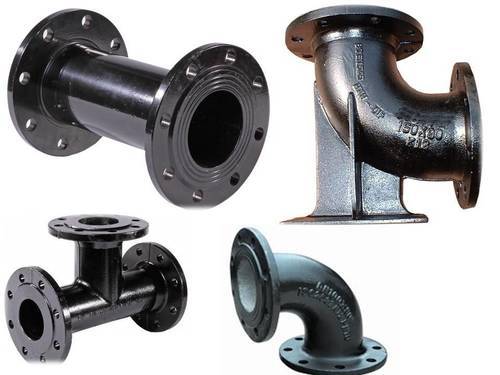Project Report For Ductile Iron Pipe Fittings Manufacturing
Introduction
Project report for Ductile Iron Pipe Fittings Manufacturing is as follows.
The first cast Ductile Iron Pipe Fittings were constructed with flanged joints and lead or leather gaskets some 550 years ago. The bell and spigot joint was invented in 1785 and was widely used until the late 1950s.
It was made by caulking thread or braided hemp into the base of the annular bell chamber and then pouring molten lead into the remaining space inside the bell. The roll-on joint was invented in 1937 and utilised for around 20 years before being phased out of production.
Project Report Sample On Ductile
Iron Pipe Fittings Manufacturing
Get Completely Custom Bankable Project Report
A compressed rubber gasket was rolled beneath a limitation ring, then caulked square-braided jute was used to complete the junction. A bituminous compound was used to fill the rest of the joint.
Push-on and mechanical joints are the most common today. The mechanical joint was originally designed for the gas business in the late 1920s, but it has since found widespread use in the water sector.
The push-on joint was invented in 1956 and was a significant improvement in the world of water distribution. For years, a variety of unique joints have been available. Ball and socket joints for subaqueous crossings, grooved and shouldered joints, and a variety of restricted joints are among them. Ductile Iron pipe has a significantly larger range of joints than any other piping material, allowing for more flexibility and diversity in pipeline design and installation.
The market demand is being fueled by an increase in the number of smart city and infrastructure development projects. Furthermore, governments are being directed to undertake water and wastewater management projects as a result of rapid economic expansion and mounting demand to enhance the sanitation in metropolitan areas. Furthermore, a wide range of industrial application sectors is predicted to provide plenty of market prospects.

Some of the ductile iron pipes market trends giving substantial growth opportunities include rapidly rising awareness for clean and safe drinking water, increased technological breakthroughs, and better wastewater management solutions and manufacturing practices. Furthermore, strict government restrictions for wastewater management and agricultural irrigation present considerable prospects for ductile iron pipe manufacturers.
Price instability and the demand-supply gap in raw materials necessary for ductile iron pipe manufacture, on the other hand, are key roadblocks to market expansion. In addition, the market’s growth is hampered by the significant investments necessary to establish pipe production and wastewater treatment plants.
Despite this, increased investments in earthquake-resistant pipes in various regions are expected to sustain market growth over the forecast period. Ductile iron pipes are resistant to earthquakes; they flex but do not shatter, ensuring a reliable water supply.
Market Potential Of Ductile Iron Pipe Fitting Manufacturing
Expenses

Product Cost Breakup

Reveneue Vs Expenses

Market Trend

The global market for ductile iron pipes is quickly expanding, owing to an increase in smart city projects. Governments around the world are increasingly pursuing water management projects and investing in improving people’s quality of life. In addition, important ductile iron pipes market trends include the growing need for smart living and the evolution of waste management technology.
The government’s smart city projects attempt to improve the city’s livability by focusing on area-based development, such as increasing access to clean and safe drinking water and lowering pollution levels. Basic urban life requirements include adequate and reliable water and sanitation, as well as cheap housing, wastewater management, and health and a sustainable environment.
Furthermore, the world’s growing population, particularly in metropolitan areas, and rising industrialisation present the huge market potential for ductile iron pipes. The market is expected to develop as more people use water and wastewater treatment processes as a result of rising worldwide water stress and industrial wastewater discharge in aquatic environments.
As a result, the market is likely to increase significantly in the next years. As per Market Research Future (MRFR), the global ductile iron pipes market is expected to reach USD 13.6 billion by 2027, with a 6.5 percent compound annual growth rate (CAGR) throughout the forecast period (2020 to 2027).
